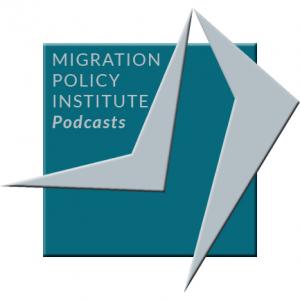Migration Policy Institute Podcasts
2018-03
Episodes

Thursday Mar 22, 2018
Thursday Mar 22, 2018
Across many early childhood education and care (ECEC) and K-12 school systems in the United States, the diversity of languages spoken, countries of origin, and other characteristics of the young child population is rapidly rising. An increasing number of communities in the United States are experiencing conditions of “superdiversity,” creating learning environments that require different instructional strategies and approaches than those used in more homogeneous or bilingual settings to support Dual Language Learners’ access to high-quality early childhood services that can support their healthy development and future academic success.
This webinar marks the release of two research reports that illustrate the challenges and opportunities related to teaching and learning in a superdiverse environment, pointing to promising approaches to work effectively in multilingual, multicultural classrooms. The reports focus on patterns of home language use across different ECEC program types, and the potential of the Sobrato Early Academic Language (SEAL) model to improve instruction and outcomes for Dual Language Learners in superdiverse settings. During the webinar, authors present findings and highlights from their work, and key implications for policy and practice will be discussed.
The reports discussed are:
The Language of the Classroom: Dual Language Learners in Head Start, Public Pre-K, and Private Preschool Programs
Supporting Dual Language Learner Success in Superdiverse PreK-3 Classrooms: The Sobrato Early Academic Language Model

Monday Mar 19, 2018
Monday Mar 19, 2018
With immigration increasingly visible in the news and the political space in the United States and internationally, getting access to accurate, high-quality data is essential for publics and policymakers to understand immigration’s demographic effects and impacts on the economy, education and labor systems, and the communities in which immigrants and their families live and work.
This event marks the release of an updated version of the popular Immigration Data Matters guide, which directs users to more than 220 international and U.S. data sources, and explains how to navigate sometimes complex datasets issued by government statistical agencies, international organizations, and reputable research organizations. This handy online guide includes data sources covering everything from the size of foreign-born population stocks and flows to citizenship applications, children in immigrant families, refugee admissions, migrant deaths, international student enrollment, global remittance flows, enforcement activities, and much more.
At a time of proliferating data sources on immigration and immigrants, the presenters (Jeanne Batalova, MPI Senior Policy Analyst and Data Hub Manager, MPI; Mark Mather, Population Reference Bureau Associate Vice President for U.S. Programs; Elizabeth M. Grieco, Pew Research Center Senior Writer/Editor and former U.S. Census Bureau Foreign-Born Population Branch Chief; and Marc Rosenblum, Deputy Assistant Secretary and Director of the Office of Immigration Statistics at the U.S. Department of Homeland Security) discuss where some of the most user-friendly data can be accessed, including MPI’s own Migration Data Hub. They share their insights on how to avoid common pitfalls in using existing immigration data and highlight relevant data sources available from international organizations and national governments, including the U.S. Department of Homeland Security.

Thursday Mar 15, 2018
Thursday Mar 15, 2018
Immigrants, who account for 17 percent of the U.S. labor force, are twice as likely as native-born workers to work in industries where core labor and safety standard violations are widespread. Many immigrants have been driven into low-wage, under-regulated work by a confluence of immigration policies and economic transformations in which companies now routinely contract out for their labor needs, such as occurs in the cleaning, warehousing, food preparation, construction, and transportation sectors. In these sectors, it is commonplace for employers to misclassify workers as independent contractors to avoid paying employer-related taxes and workers compensation, and to evade responsibility for compliance with labor standards. Pushing back against the deterioration of labor standards in these sectors requires robust and strategic enforcement, but both government and private-sector driven enforcement are stymied by limited resources and disincentives for workers to file complaints.
State and local governments, with their broad enforcement powers, access to tax and insurance data, and their role in regulating unemployment insurance and workers’ compensation, are uniquely positioned to respond. As a Migration Policy Institute report outlines, state innovations in enforcement can benefit both native-born and immigrant workers alike, increase state tax revenue, and level competition in the marketplace for law-abiding employers. However, since states also contend with limited resources, strategic enforcement of workplace statutes that change employer behavior is key.
At this report release discussion, the authors, Muzaffar Chishti, Director, MPI's office at New York University (NYU) School of Law, and Andrew Elmore, NYU School of Law Acting Assistant Professor and former New York Office of Attorney General Labor Bureau Section Chief, discuss the dynamics in low-wage workplaces and immigration law that have contributed to systematic violations of labor standards. They also highlight the new and effective enforcement strategies that state and local governments across the United States are utilizing. And California Labor Commissioner Julie Su and Tennessee Bureau of Workers’ Compensation Administrator Abbie Hudgens discuss how they have leveraged existing resources to more effectively enforce labor laws.